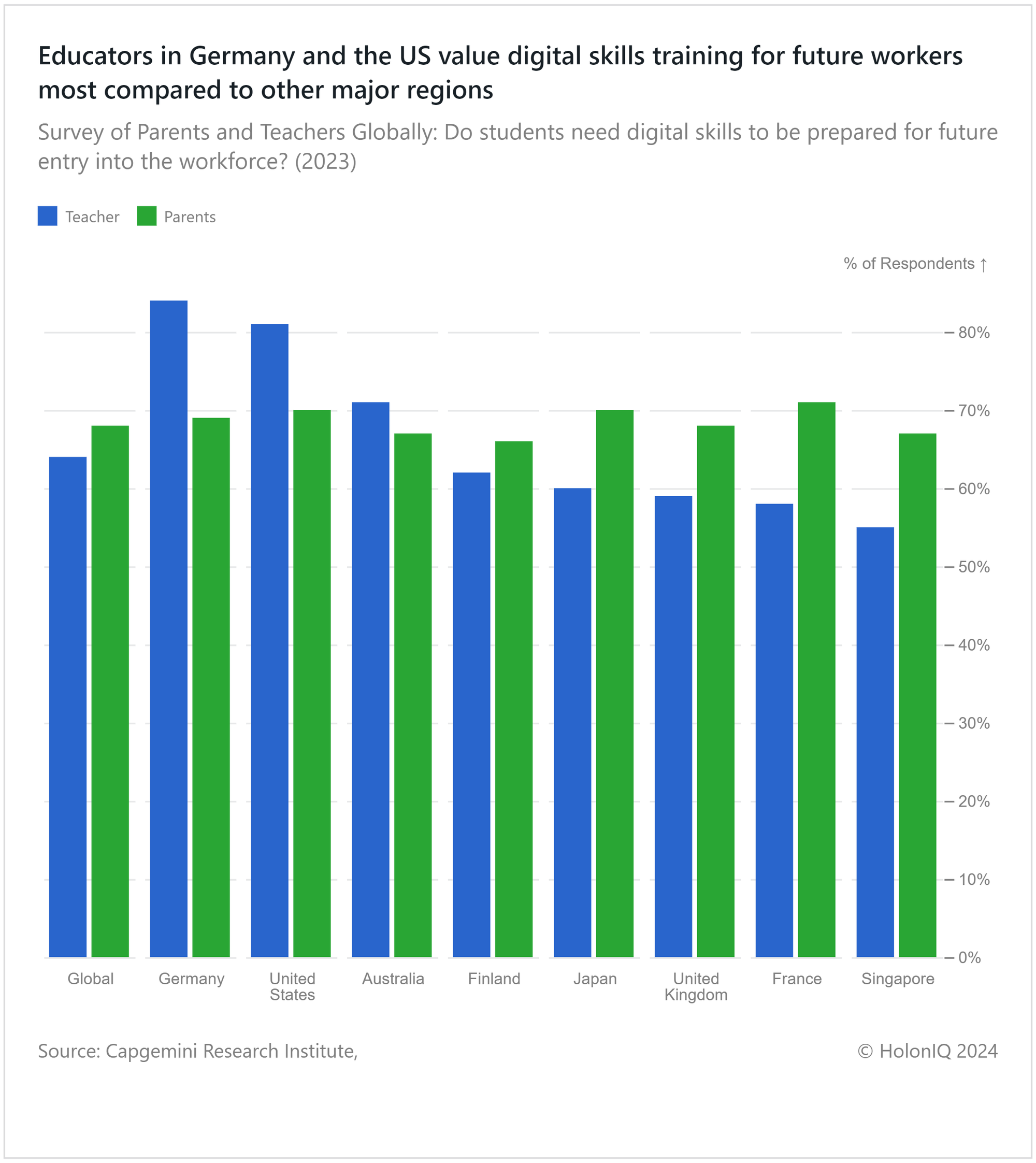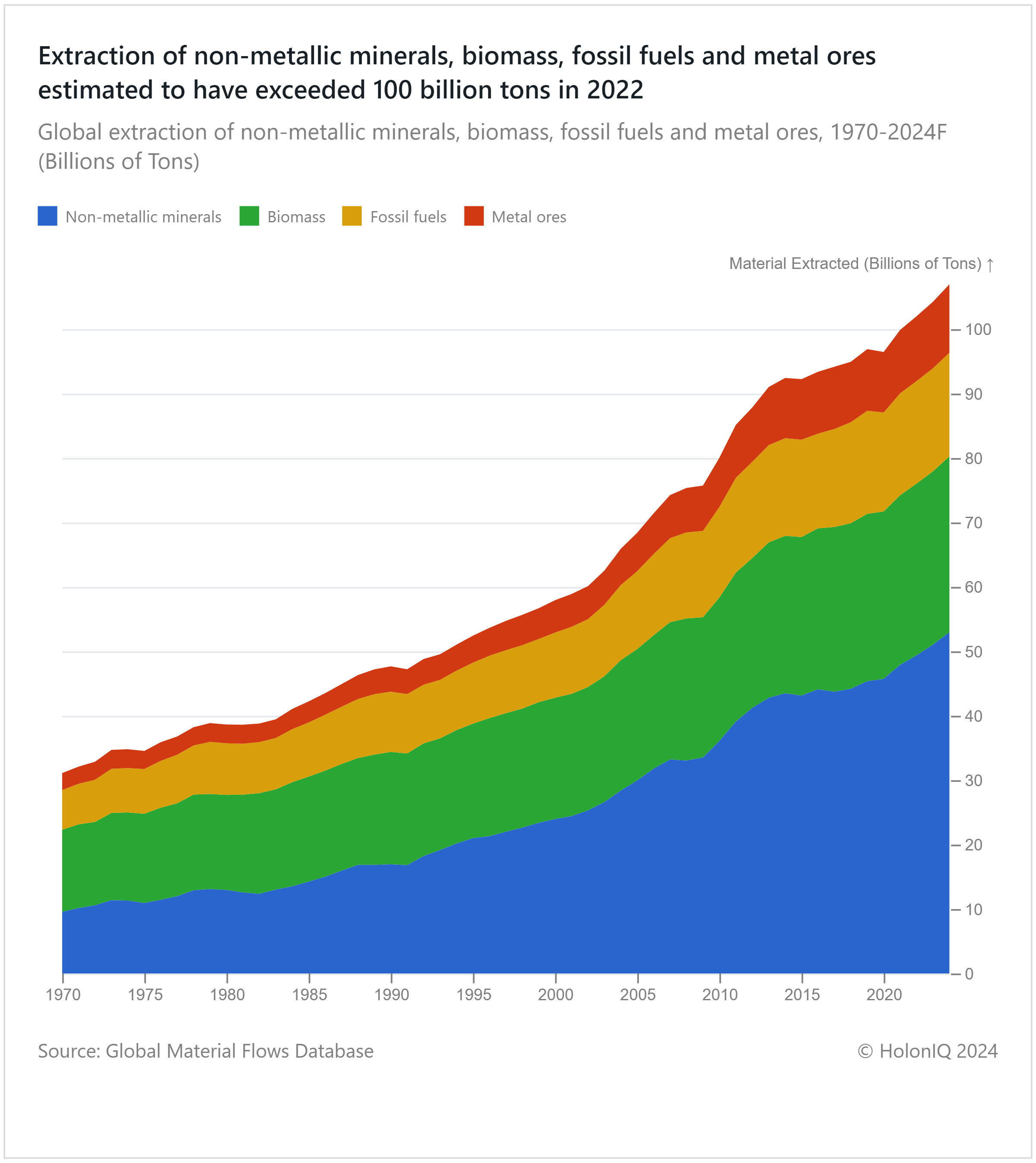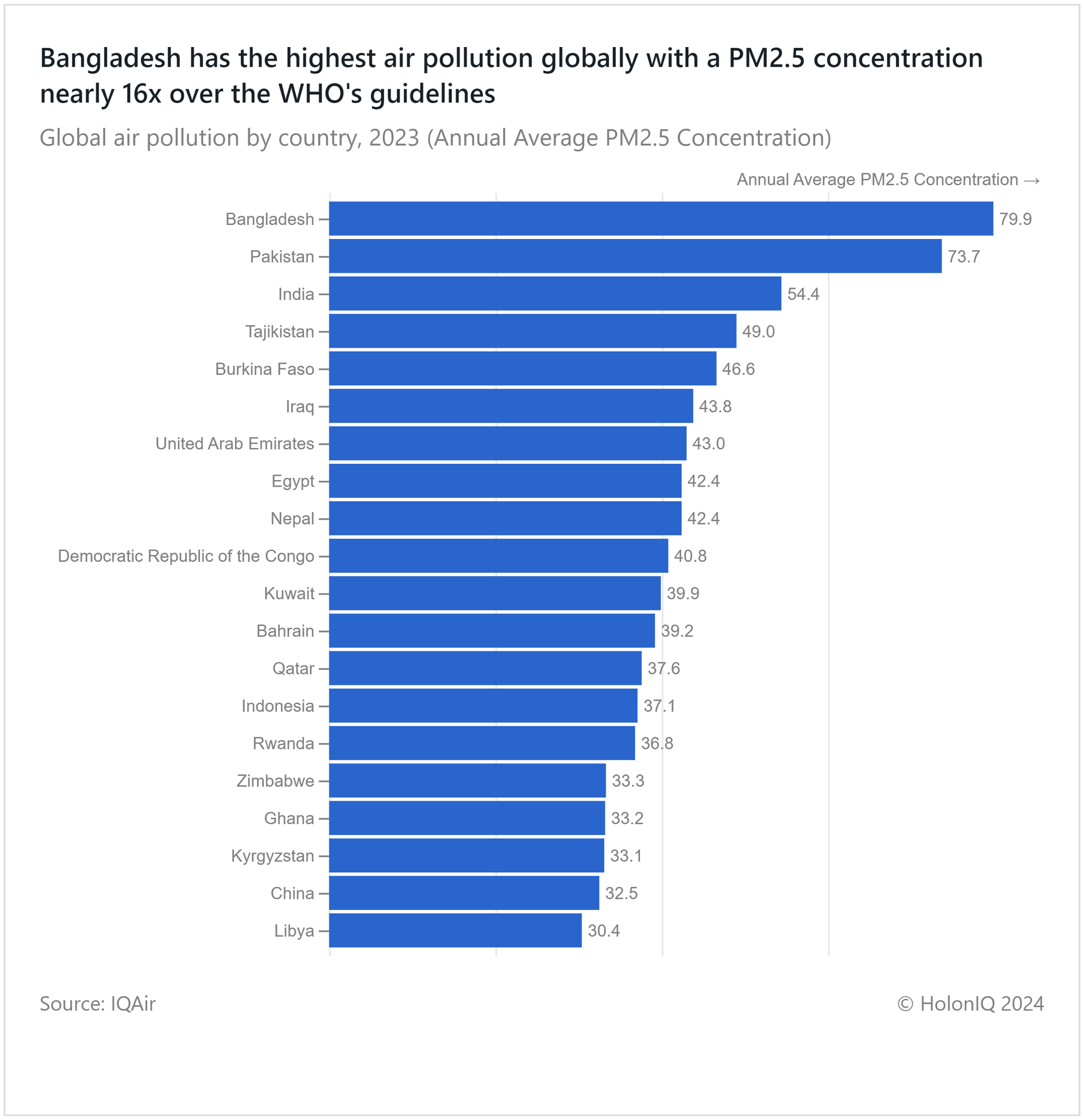⛏️ 100B Ton Natural Resource Extraction. Digital Skills Needs. Air Pollution.
Chart of the Day #102 looks at Digital Skills, Resource Extraction, and Air Quality.
Sawasdee 🛕
Microsoft and G42, in collaboration with Kenya’s Ministry of Information, Communications, and the Digital Economy, announce a $1B initiative to develop a comprehensive digital ecosystem in Kenya. The EU has approved new rules to limit and monitor methane emissions from its energy sector and imports of oil, gas, and coal, starting in 2030. These regulations, part of the EU’s ‘Fit for 55’ initiative to achieve net zero emissions, will affect major natural gas suppliers, including the US.
Today's Topics
🧑💻 Digital Skills. Future workers' digital skills valued highly by US and German educators
⛏️ Resource Extraction. Global resource extraction topped an estimated 100B tons in 2022
😷 Air Quality. Bangladesh's air pollution 16x over WHO limit
For unlimited access to over one million charts, request a demo.
🧑💻 Future Workers’ Digital Skills Valued Highly by US and German Educators

Globally, 64% of teachers and 68% of parents agree that students' proficiency in digital skills is crucial not only for utilizing technology in their education but also for future career readiness. As technology continues to change the nature of work, the rise in artificial intelligence and the pandemic bringing forward an increased use of digital tools have made this skill prevalent. In 2023, 92% of jobs require digital skills, and this is expected to increase further in 2024 as demand for cybersecurity, machine learning, and artificial intelligence grows. Students' ability to develop digital skills that complement emerging technologies will help them remain competitive and adapt to the changing workforce. By improving productivity, creativity, and innovation, digital skills can add value helping students progress in their academic careers, and increase employability.
⛏️ Global Resource Extraction Topped an Estimated 100B Tons in 2022

The global extraction of non-metallic minerals, biomass, fossil fuels, and metal ores was forecasted to exceed 100B tons by 2022. This extraction includes the removal of biomass, fossil fuels, metal ores, and non-metallic minerals from the environment, driven largely by high-income economies, which consume materials at a rate six times greater than low-income countries. This extensive resource depletion is a primary cause of climate change, biodiversity loss, and environmental pollution. Biomass remains a significant component due to its use in food production and energy. The extraction of fossil fuels and minerals also continues to be substantial, reflecting the ongoing demands of the energy and construction sectors.
The energy transition relies heavily on critical minerals such as copper, lithium, and cobalt. Demand for these minerals, essential for clean energy projects, will continue to grow as many countries aim for net zero emissions, posing potential risks of supply and demand imbalances. Over 90% of global biodiversity loss and water stress are linked to resource exploitation for agriculture and timber production. Environmental pollution, particularly microplastic pollution from plastic waste and intense air pollution from fossil fuel emissions and mining activities, are further harmful consequences of rising resource exploitation.
😷 Bangladesh’s Air Pollution 16x Over WHO Limit

South Asia emerges as a prominent region with some of the highest levels of air pollution. Bangladesh has the worst air quality globally with a PM2.5 concentration of nearly 80 μg/m³, almost 16 times higher than the WHO’s annual guideline of 5 μg/m³. Pakistan ranks a close second with 73.7 μg/m³, while its neighbor India comes third with 54.4 μg/m³. Although India has a lower PM2.5 concentration, pollution can travel across national borders, affecting neighboring countries, as is evident in South Asia. Air pollution can travel around the world, harming people far from its origin. This means that the most prolific polluters can potentially negatively impact people's health in areas that do not pollute as much, making the minimization of air pollution a globally collaborative effort.
Like getting this newsletter? For unlimited access to over one million charts, request a demo.
Thank you for reading. Have a great week ahead!
Have some feedback or want to sponsor this newsletter? Let us know at hello@holoniq.com
